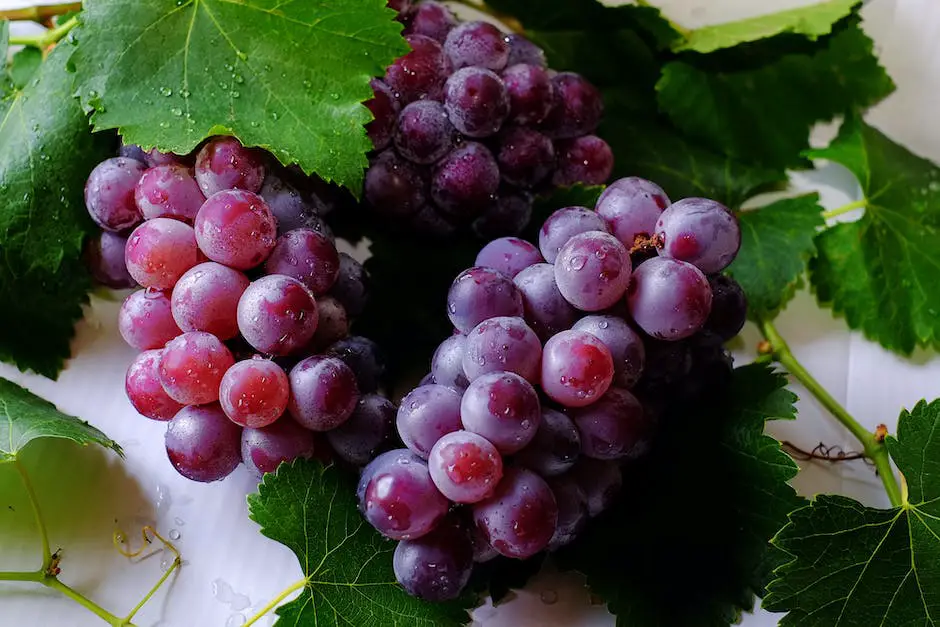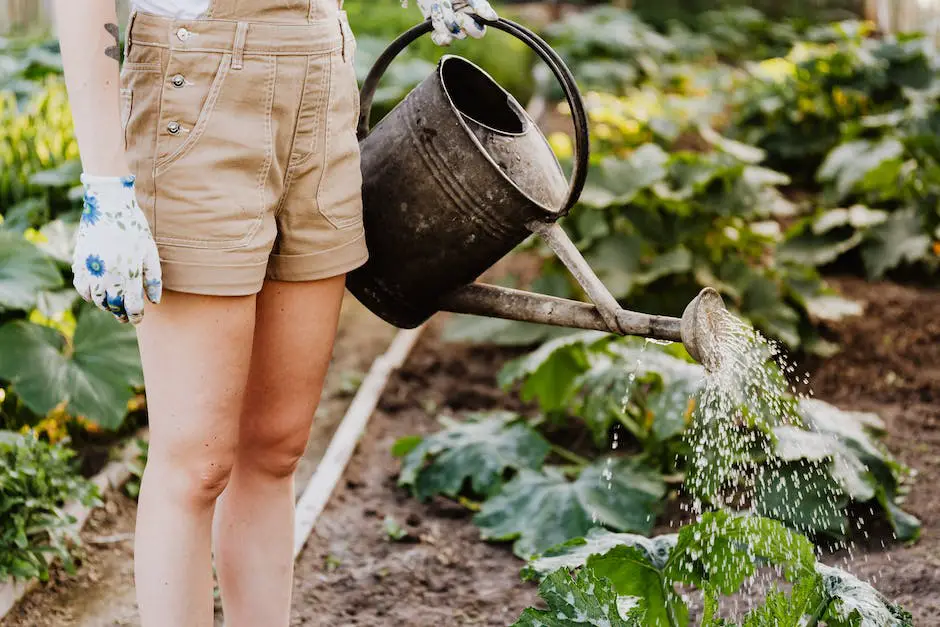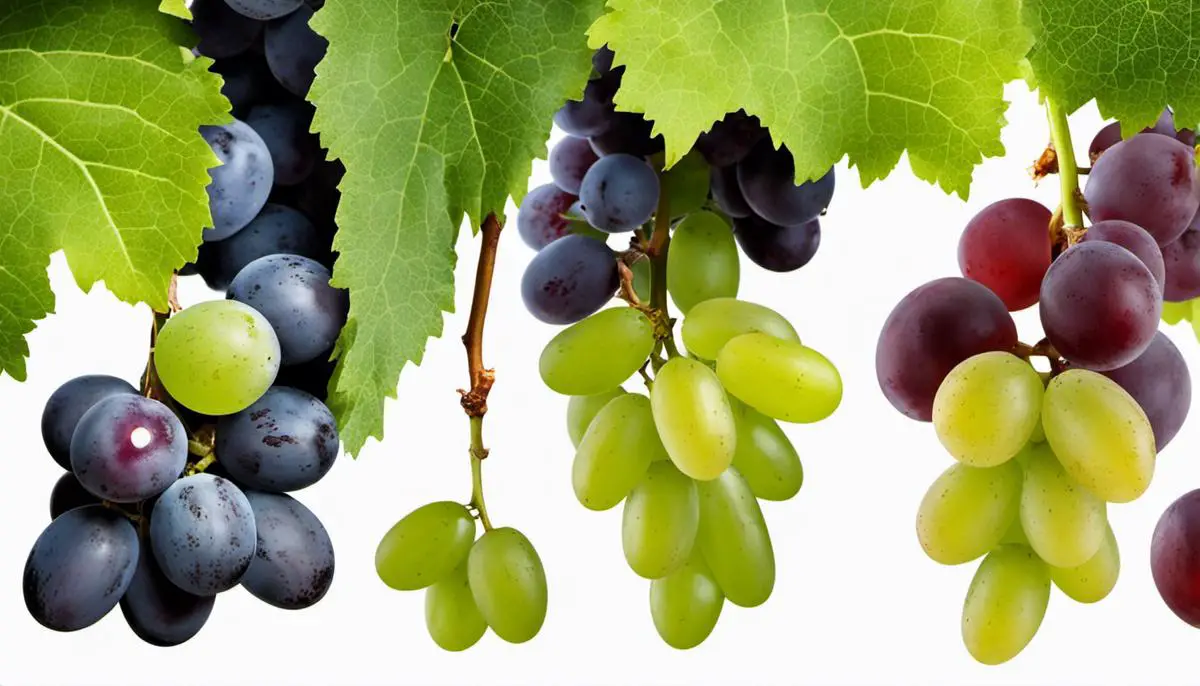The cultivation of grapes can be an exciting and rewarding endeavor, even when space is limited. Growing grapes in pots allows you to enjoy home-grown fruits in your apartment balcony, patio or small backyard. To successfully grow grapes in this unconventional way, it’s crucial to understand some important factors like the selection of the right grape variety, the preparation of your pot, and the requisite care and maintenance. Miniature or dwarf varieties bred for pot growth, combined with properly prepared and maintained containers, can produce remarkable grapevine that bear plentiful fruits. It is also vital to be familiar with common grape diseases and pests, as well as pruning techniques to ensure a healthy vine.
Choosing the right variety
Identifying the Right Grape Varieties for Pot Cultivation
Research is crucial before you embark on your journey of growing grapes in pots. Not all grape varieties grow well in containers, and therefore, it is essential to identify the ones suitable for pot cultivation. Primarily, you should be looking for dwarf or mini varieties designed specifically for container growth.
Reader Poll: What online courses would interest you?
Grape varieties can differ in their growth habit, disease resistance, and climatic requirements. These factors play a key role in deciding which types you can successfully plant and grow – for instance, wine grapes generally require a dry, Mediterranean-type climate, while table grapes can tolerate a wider range of climates. Among disease-resistant species, ‘Somerset Seedless’ grapes, with their sweet flavor and red-hued grapes, make a good choice for container gardening. For cooler regions, ‘Flame’ grapes are an excellent option, as they are resistant to both fungal diseases and frost.
Methods of Planting and Care
Once you’ve settled on the appropriate grape variety, the next step is planting. Begin with a well-drained pot with a diameter of at least 16 to 18 inches. The pot should also have enough depth to accommodate the grapevine’s root system. Use a good quality potting mix designed for fruit-bearing plants.
Plant the grapevines in early spring when the risk of frost has passed, placing them in the center of the pot. The top of the root ball should be level with the surrounding soil mix. Post planting, vigorous water management will be required. Ensure the soil is moist but not waterlogged.
Subscribe to our newsletter!
Grapevines require plenty of sunshine, ideally six hours a day. In terms of feeding, apply a slow-release fertilizer at the start of spring when new growth appears and halfway through the growing season. Ensure that the vine is well-supported with a sturdy trellis or framework to guide its growth.
Pruning and Harvesting
Pruning is an important aspect of grape cultivation in pots. This promotes air circulation, robust growth, and aids in disease prevention. The best time for pruning is late winter, while the vine is dormant.
Harvesting usually happens in late summer or early fall, depending on the grape variety. It would be best to taste a grape before harvesting to ensure they are ripe.
Remember that this is a long-term commitment – many grapevines don’t produce fruit until their third year, so patience is essential in your grape-growing journey.

Pot preparation and grape planting
Choosing the Right Pot for Grape Planting
The first step towards successful grape planting in pots is choosing the right container. Containers made of plastic or clay are ideal. The selection will often depend on your personal preference and the specific needs of the grape variety you intend to grow.
The size of your pot is also crucial. Grapes have extensive roots that need enough space for growth. Therefore, the pot should be at least 15-20 inches in diameter and depth. But, bigger is usually better when it comes to selecting pots for grape planting. Larger pots provide more space for root growth and hold more soil to prevent the plant from drying out in hot weather.
Preparing Soil for Grape Planting
Grapes require well-drained soil with a slight level of acidity. This means pH levels should be ideally between 6 and 7. You can meet these needs by creating a mixture of one part perlite and one part peat moss with two parts of potting soil. If your grape variety prefers more acidic soil, consider adding a bit of granulated sulfur to the mix. Remember to consult with a local nursery or your local agricultural extension service to identify the specific soil needs of your grape variety.
Ensuring Proper Drainage
Good drainage is essential for grape growth. Overwatering or inadequate drainage can lead to waterlogged soil, which may cause root diseases. To ensure proper drainage, choose pots with drainage holes at the bottom. An addition of a layer of coarse gravel or pebbles at the bottom of the container prior to adding soil can also improve drainage.
Initial Planting Process
Once you’ve prepared your pot and ensured proper drainage, you can move forward to planting. Start by filling your pot with the prepared soil, not pouring it to the very top, but leaving about 1-2 inches of space. This allows for easier watering later on.
Next, plant your grapevine cutting or seedling. If you’re using a cutting, position it so the bud union is above the soil surface. If you’re planting a seedling, ensure its roots are spread out and not circling in the pot. Cover the roots with soil and press gently to ensure contact.
After planting, give the vine a good watering until you notice water seeping from the drainage holes. This ensures the soil is evenly moist and helps to settle it around the roots.
To give your grape plant a good start, consider staking it from the beginning. A stake provides necessary support as the plant grows and makes future management and training of the vine a lot easier. After planting, place a stake in the pot, being careful not to damage the roots or cutting. You can then loosely attach the vine to the stake.
Keep the freshly planted vine in a well-lit area and water regularly, keeping the soil consistently moist but not waterlogged. Adjust your care according to the grape variety’s specific needs, and ensure the plant receives at least 6-8 hours of sunlight per day. With the right care and conditions, you can successfully grow grape plants in pots.

Care and Maintenance of Grapevines in Pots
Choosing the Right Variety and Pot for Grapevines
Grapes can thrive in pots if provided with the right conditions. Select a variety that’s suited to your climate, dwarf or miniature varieties being particularly ideal for containers as they require less space. Always give careful consideration to pot size because the more soil a pot can hold, the more room the grapevine’s roots will have to grow. A size around 15-20 gallons is usually suitable for most grape varieties.
Providing a Support Structure for Grapevines
Even when grown in pots, grapevines are climbing plants that generally require some sort of support to help them grow healthily. Simple trellis systems work well for pots and can be easily constructed from a variety of materials like wood, metal, or plastic. The vine should be trained to grow up the support by gently tying it in the desired direction as it grows.
Watering and Feeding Grapevines
Grapevines in pots need consistent care when it comes to watering and feeding. Water them thoroughly when the top inch of the soil has dried out, as grapes prefer a well-drained soil. Fertilizing is also an important part of their care. Use a balanced, slow release fertilizer and follow the package instructions for amounts and frequency.
Pruning Grapevines for Optimum Growth
Pruning is necessary for grapevines because it aids in controlling their size and aiding fruit production. In the first year, allow the vine to grow unrestricted to build a strong root system. From the second year onwards, regular pruning is needed to encourage new growth that will carry fruit. Pruning is usually done in late winter when the vine is dormant.
Preventing Diseases and Pests
Common diseases that might affect your potted grapevine include powdery mildew and black rot. Regular checks of the vine for discoloration or unusual growth can help in early detection and control. Keeping the area around the vine clean can discourage pests like aphids or spider mites from attacking. If pests do appear, use pesticide sprays or introduce natural predators like ladybugs to control them.
Remember, growing grapes in pots can be a rewarding endeavor with the right care, patience, and consistency. While it may require more work than planting them directly in the ground, the ability to have fresh grapes from your own vine is definitely worth the efforts.

Growing grapes in pots is undeniably a grand endeavor that can yield fruitful rewards if handled properly. The right variety of grapes planted in a well-prepared pot and tended with proper care can make your dream of experiencing homegrown grapes a reality. It’s a journey of discovering the intricacies of grape cultivation – from planting to pest management to pruning. With the correct knowledge and commitment, you can relish the beauty of your grapevines and savor the fruits of your labor right from your own home, regardless of the space. So, embrace the challenge, nurture your potted grapevines, and delight in your own little vineyard.

